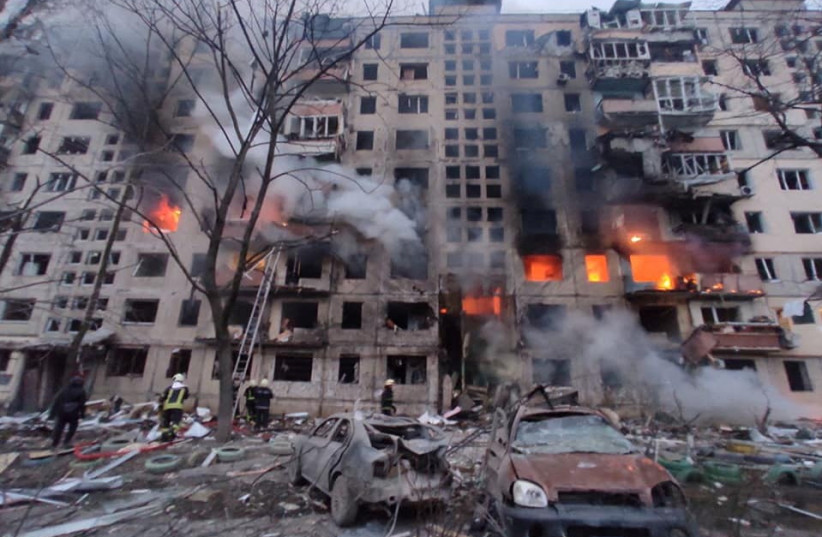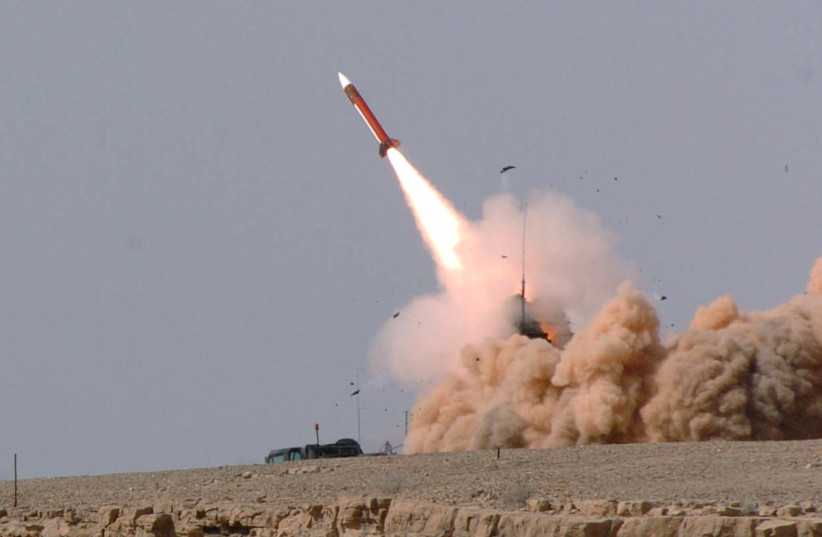Israel is again being singled out as a country that could be doing more for Ukraine in the wake of the Russian bombardment of Ukrainian cities using drones and missiles.
The Washington Post noted this week that “as missiles strike Ukraine, Israel won’t sell its vaunted air defense.” This adds to a chorus of voices who have wondered since the war began whether Israel would supply air defenses to Ukraine. Some of the criticism is uniquely aimed at Israel, with references to the Holocaust and other claims that the Jewish state must send defenses.
The demand for air defenses for Ukraine is shifting because, in the early days of the war, the suggestion that Israel would step forward and go beyond what the US and Western countries were doing didn’t make sense. However, now more than six months into the war, as the West appears to unite to aid Kyiv’s air defenses, there are questions that will continue to focus on Israel.
Fact or fiction?
It's worthwhile to look at some of the facts regarding Israel’s air defense systems, which are some of the most sophisticated, integrated ones in the world. This is a result of three decades of investment and unique cooperation between Washington and Jerusalem.

Back in the 1990s, Israel faced threats from Iraq in the form of the Scud missile. Israel had faced missiles before that as well, such as threats from terror groups in Lebanon, or from other states. As rockets improved and as countries like Iran improved their own missiles by learning from Russian, Chinese and North Korean designs, the threat shifted.
Later it shifted even more as Hamas in Gaza improved its rockets so that ranges increased from one to dozens of kilometers. This meant that all of Israel was soon within range of Hezbollah and Hamas rockets – and Iran’s ballistic missile threat was rapidly expanding. Then, in the last several years, the drone threat emerged, as well as the threat of precision munitions, such as precision-guided munitions (PGMs) and cruise missiles.
Israel has often been one step ahead of its enemies in fielding air defenses. At first, it had to rely on systems like the US Patriot. That system had many problems in the 1990s but was improved. Washington and Jerusalem partnered on the Arrow program and later David’s Sling, which led to the multi-layered system that exists today.
It was Israel that pioneered the Iron Dome system, which has defended Israel and intercepted thousands of rockets for more than a decade. It has been improved to take out drones and other threats; it is also funded with US support. Israel’s Rafael Advanced Defense Systems works with Raytheon in the US, while the US army has acquired two batteries of Iron Dome. The system, which has a naval version as well, will soon have lasers added to it.
Israeli companies make other air defense systems, such as the Barak system. According to reports in February, Morocco purchased Barak, and Haaretz reported that Vietnam was interested in the system in August. The Indian navy has also used the Barak system, and the Indian army also uses the MRSAM (Medium-Range Surface-to-Air Missile) system, which is based on it. In September, reports said that Rafael was prepared to sell its Spyder air defense to the UAE.
This illustrates the range of Israeli air defenses. From short-range systems such as Iron Dome to long-range ones such as the Arrow and its various versions, Israel can stop all kinds of threats. Some of these systems might be relevant for Ukraine, but not all of them.
The many issues involved
There are multiple issues involved in a potential Israeli export of defense systems to Ukraine, or of countries that use Israeli systems exporting their versions to the besieged Eastern European country.
First of all, there is the question of US support. America works with Israel on the development of David’s Sling and Arrow, which would seem to give it a say about where those systems end up. Reports in September that a sale of Arrow to Germany was delayed due to the US clearly indicate that it may have a role in these decisions.
That means that it’s not a simple question of Israel shipping David’s Sling to Ukraine, or putting Iron Domes on a plane to Poland. David’s Sling, for instance, can be used with launchers that use MIM 104 Patriot missiles; it was also meant to replace the Hawk air defense system. So some of these systems are not necessarily relevant for Ukraine because a simpler one already exists that Washington can send to Kyiv.
Basically, questions about Israel sending David’s Sling are redundant, since the US can send Patriot batteries to Ukraine. David’s Sling and Iron Dome interceptors are produced with Raytheon in the US under the name SkyCeptor and SkyHunter, So America is already making parts of these systems.
On another level, the Arrow system may not be appropriate for Ukraine because the US has a system called THAAD (Terminal High Altitude Area Defense) which it could supply to Kyiv. That Washington hasn’t sent such advanced systems means there is no logical reason for Israel to send them and go beyond the US mandate.

America sells the THAAD to the UAE, Patriots to the Saudis and the NASAMS (National Advanced Surface-to-Air Missile System) to Kuwait. These are all potentially relevant for Ukraine. There’s no reason that Israel would duplicate this effort or go beyond the US and Western countries and their decisions.
Beyond the question of Israeli systems being tied into or backed by the US – and thus Washington having some say in the matter – there is the larger question of the Jewish state not wanting to get militarily involved in the Ukraine conflict.
Israel has concerns about Russia and its air defenses in Syria, which impacts policymaking in regard to Ukraine. Moscow has S-300s and S-400s in Syria, and Israel and Russia have deconfliction agreements regarding Israel’s northern enemy amid Jerusalem’s war between the wars campaign against Iran’s trafficking of weapons to Syria. So Israeli air defense systems in Ukraine would clearly provoke Moscow.
On the other hand, the American and wider European effort to now supply Ukraine with air defenses may provide some cover for Israel in this respect, if those countries want to supply systems that have an Israel connection. A spotlight on Israel regarding the air defenses, therefore, seems misplaced. While Ukraine wants air defenses, the West has been hesitant to supply its most complex and modern systems.
Demands that Israel goes beyond what the West is doing seem to be more about headlines than analysis and understanding of the complexities of the Israeli systems and their tie-in, in some cases, with the US and existing Western systems.
